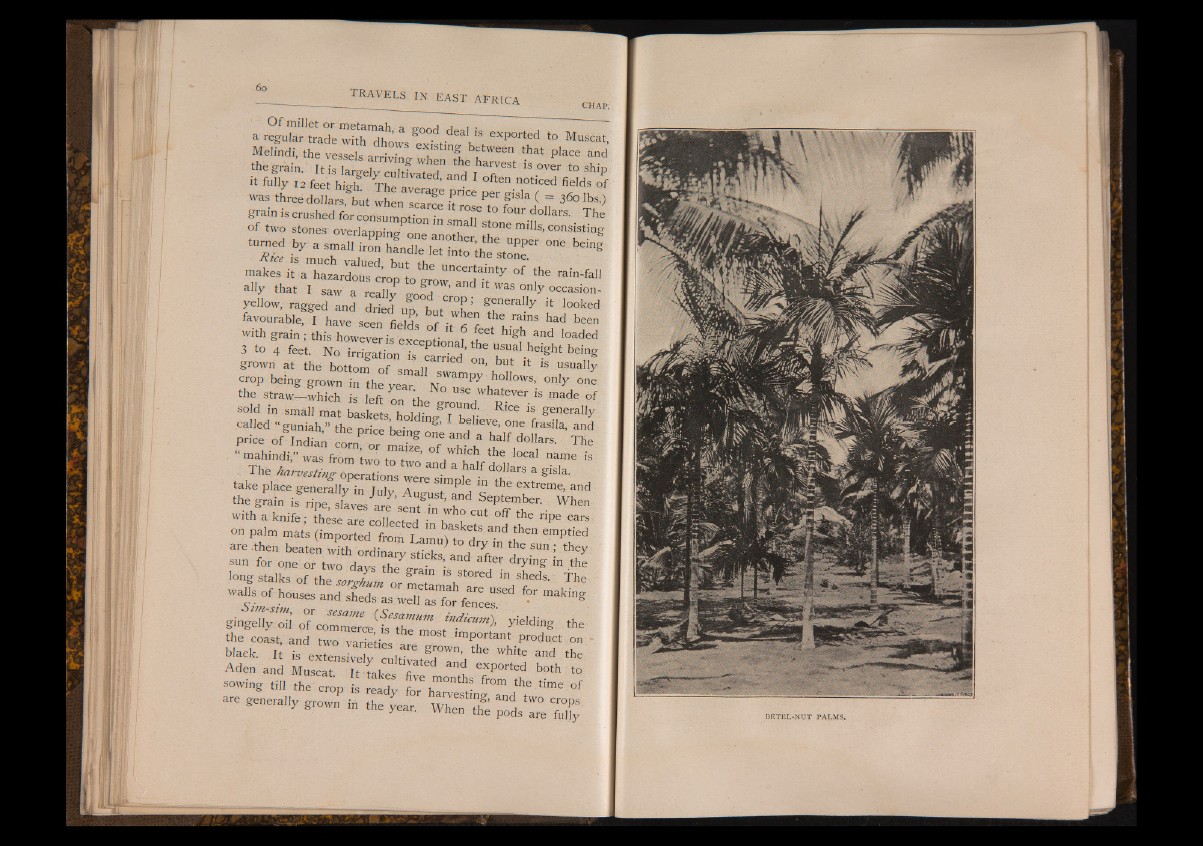
a regufer^rade whhThmv g ° ° d J “ e xPorted to Muscat
that Place * 1
the grain. * * * t0 ^
it fully 12 feet hip-h The Q ’ • noticed fields oi
was three dollars, but w h L " , 7
grain is crushed for consumotion in 11 d°Uars. The
of two stones overlapping one another miIIs> consistl'iJg
t -n e d by a small iron"hfndle l e t in t ^ e
m a k eT ff a T a z a r i o t ^ o p l o t 6 o f | f rain-fall
a lly th a t I saw a re a lly g o o d ^ r o n * ^ <J,n ly o c c a s io n -
yeHow, rag g ed an d dried K &en e ra lly it looked
favourable I h Z seen f i . Z r 7 7 r * * .rains h ad been
with g ra in • this however is ex c eptiona l t h f n * ” ! 3 to 4 feet. No irrigation is " a S f Ual height being
grown at the bottom of sm a l l I ° n’ , * ls usually
crop being grown in the year N o ^ 7 , Uows’ only one
the straw— which is left ™ ih use whatever is made of
sold in small mat baskets h o ld i n / lT r 18 generalIy
called “ guniah,” the price beinp- n 7 7 ’ ° ne frasila, and
Price of Indian corn" or maTz! o f 2 7 half dolIars‘ The-
“ mahindi,” was from tw o m 7 ,whlch the Iocal name is
The f alf I N a gislatake
place generally in T u lv A slraP^ ln the extreme, and
the grain is^ipe J w e s i t ’s ^ i n ’ M M l When
with a.knife; these Z e c n l lZ Z 7 7 CUt ° ff * * riPe ea«
on palm mats (imported from L a l u 0 ^ emptied
are .then beaten with orditS J W *he f * ; «hey;
sun for one or two davs th/m- • • drying in the
long stalks of tho sorghum orme!a fiP"®* * in sheds' The-
“ " L i t 0" 5“ an d sheds “ wdI “ U f e " « " sed f?r ma,Iing;
gingelly oil’ of c o Z Z Z ^ f s Z h T m o s t 'f^ Z ’ yielding the
the coast, and two varieties => important product on -
black. It is extensive! L-^’ grown’ tbe white and the
Aden and Muscat. I n f t T W k P - and exported both to
sowing till the crop is ready for ^ e s tin g T n d ^ t ^
- generally grown ifi the year. W h e f ^
BETEL-NUT PALMS,